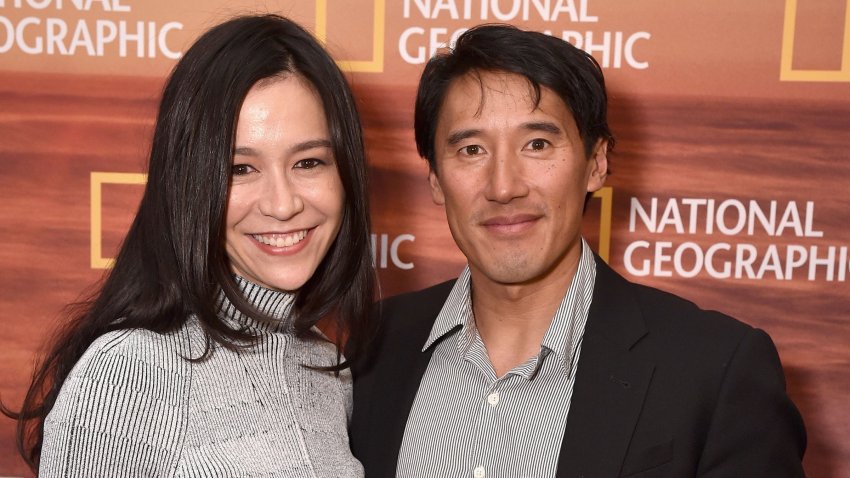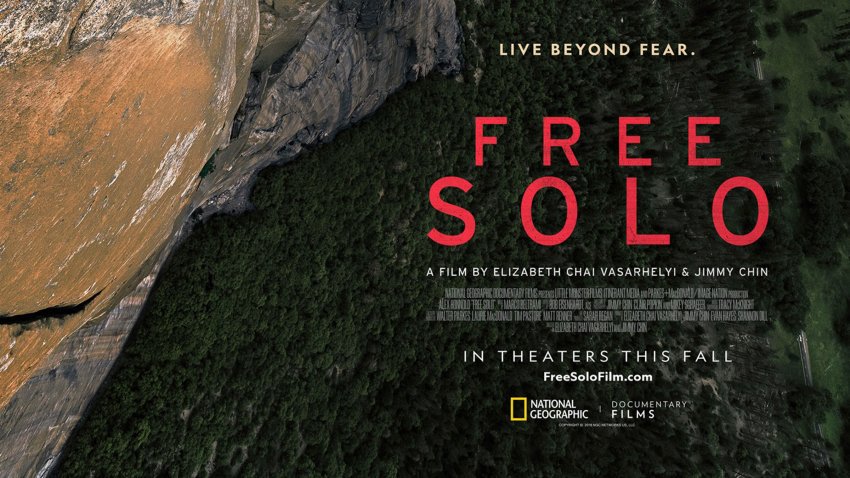There are times when you watch a film or a documentary and you cannot pull your gaze away. This is the feeling with the documentary feature “Free Solo.” Professional rock climber, adventure photographer, and filmmaker Jimmy Chin and his equally cinematically qualified wife Elizabeth Chai Vasarhelyi, who is a well-accomplished producer in her own right, crafted a beautiful film about their friend Alex Honnold and what many might call the greatest athletic accomplishment yet, the free solo of El Capitan, a 3,000 foot high vertical rock formation in Yosemite National Park. In the documentary, Alex climbs without a rope from base to summit, all 3,000 feet, with only hard earth below him.
As an amateur rock climber, I do not climb twenty feet without a rope and I, at one time, was okay at the sport. As a professional camera operator and director of photography I have known of and watched much of Chin’s work. I love how Chin frames the world of adventure sports. A world I wished and hoped to see more and more from his angle. None of this helped me with a moment of star-struck inducing complete brain blanking sickness when I started this Art of the Shot interview. This must have been one of the most difficult interviews I have yet to conduct. Part of my problem I discovered was how to get past the obvious questions surrounding a climber who free solos. If this interview is lacking in any way, trust me I am at fault.
Since this is a technical website let’s get some of those details out of the way. “Free Solo” was shot in 4K mostly using the EOS Canon C300 Mark II with a number of different lenses but one lens proving to be particularly useful was the Canon CINE-SERVO 50-1000mm. I imagine a light-weight cinematic camera like the Canon EOS C300 Mark II was just the right tool for the incredibly difficult shooting circumstances.
The two big takeaways to glean from this interview with Jimmy Chin and Elizabeth Chai Vasarhelyi is this. First, this was not a single day shoot. Not at all. This team of filmmakers and rock climbers spent time, a lot of time, getting the situation surrounding the incredible climb to a place mutually beneficial to the documentary as well as the athlete. Second, it took a dedicated team of collaborators who also knew their way around professional rock climbing too.
Jimmy Chin
We filmed for two years on the route with Alex. A team of high angle shooters has spent years of their careers, myself included, filming in high angle places and even specifically on El Capitan. So we came into this film with a lot of experience shooting the kind of work. You know what really allowed us to push the cinematography was being able to film with Alex for the two years while he practiced on the roof. We were really able to dial in and refine exactly how we were going to shoot it. Essentially, we had two years of practice to get our positions and how we wanted to shoot it and what shots looked the best. So that on the day he went we would know exactly what we were going get. That took a lot of the kind of the hesitation out of what shot we wanted. We really were able to also watch all the footage that we shot almost every day because we had an editor on site. Every night we looked at dailies and we’d kind of think OK the next time we go up there we shoot it this way and we could try a lot of things. That’s how we ended up getting what we got on the day that the Alex climbed
Brian Hallett
How did this film come about?
 Jimmy Chin
Jimmy Chin
Well, I’ve been working with Alex for over ten years. I’ve filmed him free soloing and shot photographs with him free soloing on a number of different occasions. I climbed with him all around the world and it’s that familiarity with Alex and what he does and his character and personality that we were most interested about originally. Alex is the one that brought El Cap and said he wanted to solo El Cap when we told him that we were going to make a film. That process took some time. You have to kind of examine the ethical questions around it. Whether or not us filming Alex would make it more dangerous. It was a very calculated and thoughtful approach in how we wanted to make the film. Why we wanted to make the film and our intention with our approach to making the film. In some ways, you could say it was many many years in the making. It didn’t just happen overnight. I don’t think you could really come into a film about Alex free soloing El Cap if you didn’t have years of experience with him seeing how he made his decisions because if this was just a stunt of some sort we wouldn’t have done it. We knew that there was a major process to it. He’s hyper-calculated. He climbs for himself. He’s not doing it for anybody else. That purity of his intention was also very important in our decision.
Brian Hallett
How did you manage your presence around him on the day?
Elizabeth Chai Vasarhelyi
Very carefully. It wasn’t just in a day it was about two years. It was about practicing with him. It was about anticipating how he feels so that nothing surprises him on the actual day. It was always deliberate what we did. The positions were very fixed. I worked on them. Finding them over a years. We had to try to insulate Alex from our feelings at all times. I think it really ended up affecting the climb in a really special way where he had his closest friend next to him during his largest biggest most historically free solo of his career. So suddenly this endeavor that was always something he did very alone. He had us there and I think that actually turned into something special.
Brian Hallett
What do you say to people who want to build on your work? Do you say to those filmmakers?
Elizabeth Chai Vasarhelyi
Good luck. More power to you. Everyone should pursue whatever dream they have. We would be the first people to support anyone but please be careful and bring honest ethical deliberations to what you do.
Jimmy Chin
It’s really important. I think all of us have built on the people that we’ve looked up to. As they say, we’re all standing on the shoulders of giants, but it’s important if you’re going to take the time to aspire to something and to break into another level to really examine carefully how the people ahead of you have done what they’ve done. It’s not just about getting the cool angle. The deliberations around the ethos of our approach to the film, where the stakes are this high, are central to how we make films. To only take this kind of superficial lessons of what the film looks like and how it was shot and only approach it from that perspective would be a huge disservice to themselves. So I tell people to be very thoughtful about their approach, not just the shooting and stylistically how it looks, that’s actually the easy part. I think it’s how you manage your team. It’s what kind of team you put together. It’s how do you approach your subject. It’s what is your intention behind your film. Are you making this film just elevate yourself or do you really care about the subject’s story and narrative? Who are you making it for? Those things are very important things to examined before you dive into something like this.

Filmtools
Filmmakers go-to destination for pre-production, production & post production equipment!
Shop Now














